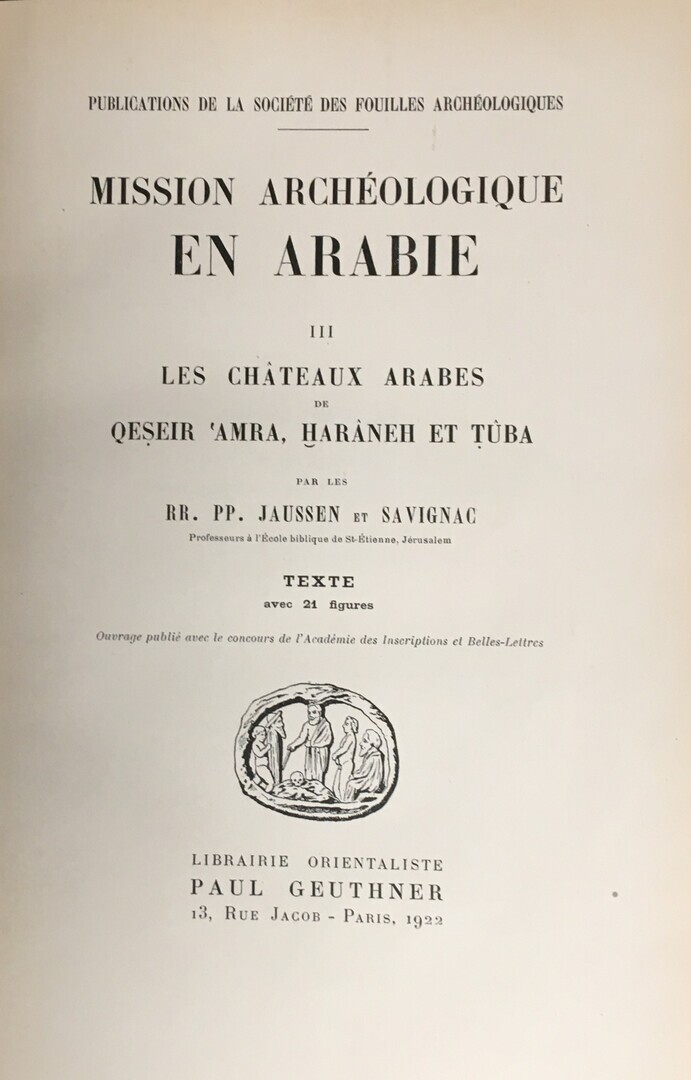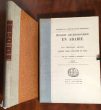Mission Archeologique en Arabie III. Les Chateaux Arabes de Qeseir ‘Amra, Haraneh et Tuba. TWO VOLUMES: TEXT & ATLAS.
Jaussen, R. R. & Savignac, P. P.
Synopsis
These remarkable monuments in the Syrian desert, Qeseir ‘Amra, Haraneh & Tuba, some 35 miles east of the Dead Sea, beyond the Hejaz Railway, are of a great interest architecturally and from other points of view as well. Qeseir ‘Amra, which was a hunting lodge, is notable for its paintings, including one shown by Greek and Arabic inscriptions to represent Roderick, the King of the Visigoths at the Arab conquest of Spain. This building probably from to the 8th century, the other two are doubtlessly earlier, but their date is quite uncertain. Qasr Tuba resembles Mushata which is in the same district and both show strong Mesopotamian influence. Qasr Haraneh is considered intermediate between Syrian and Mesopotamian work. All three monuments have been described before. The authors found the description of Qasr Haraneh and Qasr Tuba to be faulty and unreliable and redescribe them completely. They give numbers of views of Qeseir ‘Amra and a briefer description. The text includes also itineraries and historical and epigraphical notes. It is well arranged, and seems to supply all the information that can possibly be wanted. [Journal of the Royal Asiatic Society (New Series) / Volume 57 / Issue 01 / January 1925, pp 161-161].








